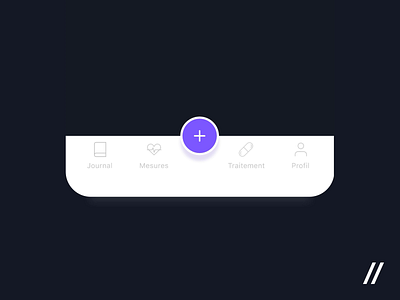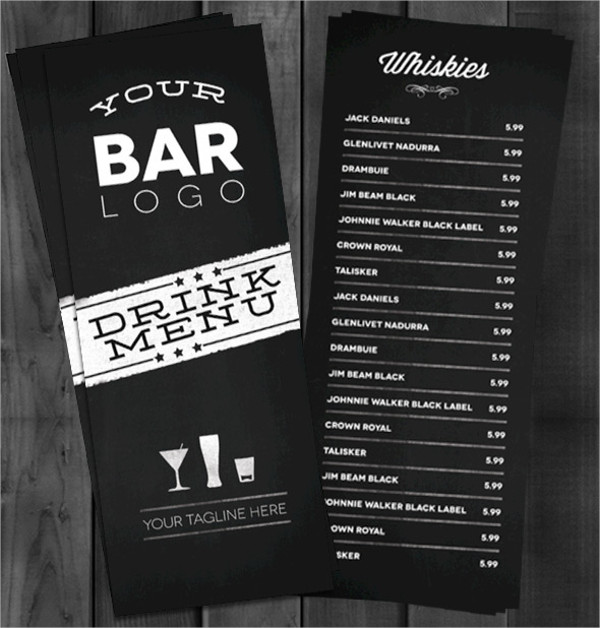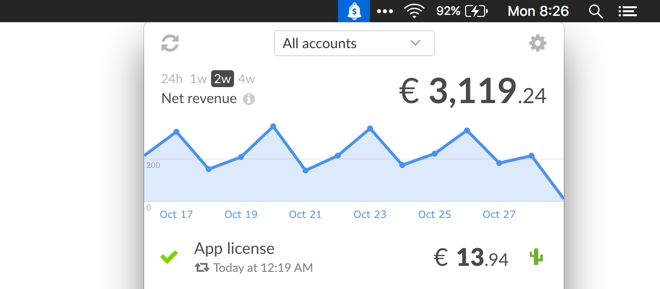-->
- Applescript Create Menu Bar Item
- How To Create Menu Bar In Applet
- Create Menu Bar App Mac
- Create Menu Bar App Download
Mar 31, 2020 To do that, we first need to create a Tray object, which displays the specified icon in the menu bar. Since we need to position and toggle our mainWindow object and also preferably be able to show a system menu when right clicked to Tray icon, it is more convenient to create a class which bundles all the functionalities inside. Once you find a graphic to start from, just tap or click to open the document in the editor. Customize the templates. There are lots of ways to personalize the menu templates. Change up the copy and font. Change out the imagery with your snapshots, or browse our collection of free stock images. Tinker with the look and feel until the menu is. Menu flyouts are used in menu and context menu scenarios to display a list of commands or options when requested by the user. A menu flyout shows a single, inline, top-level menu that can have menu items and sub-menus. To show a set of multiple top-level menus in a horizontal row, use menu bar (which you typically position at the top of the app.

Menu flyouts are used in menu and context menu scenarios to display a list of commands or options when requested by the user. A menu flyout shows a single, inline, top-level menu that can have menu items and sub-menus. To show a set of multiple top-level menus in a horizontal row, use menu bar (which you typically position at the top of the app window).

Get the Windows UI Library
The MenuBar control is included as part of the Windows UI Library, a NuGet package that contains new controls and UI features for Windows apps. For more info, including installation instructions, see the Windows UI Library overview.
Windows UI Library APIs:MenuBar class
Platform APIs:MenuFlyout class, MenuBar class, ContextFlyout property, FlyoutBase.AttachedFlyout property
Is this the right control?
See menus and context menus for help identifying menu vs. context menu scenarios and guidance on when to use menu flyout vs. command bar flyout.
Menu flyouts can be used as menus and context menus to organize commands. To display arbitrary content, such as a notification or confirmation request, use a dialog or a flyout.
If a particular command will be used frequently and you have the space available, see collection commanding for examples on placing a command directly in its own element so that users don't have to go through a menu to get to it.
Examples
Applescript Create Menu Bar Item
| XAML Controls Gallery |
|---|
If you have the XAML Controls Gallery app installed, click here to open the app and see the MenuFlyout in action. |
Create a menu flyout
To create a menu flyout, you use the MenuFlyout class. You define the contents of the menu by adding MenuFlyoutItem, MenuFlyoutSubItem, ToggleMenuFlyoutItem, RadioMenuFlyoutItem and MenuFlyoutSeparator objects to the MenuFlyout.
These objects are for:
- MenuFlyoutItem—Performing an immediate action.
- MenuFlyoutSubItem—Containing a cascading list of menu items.
- ToggleMenuFlyoutItem—Switching an option on or off.
- RadioMenuFlyoutItem—Switching between mutually-exclusive menu items.
- MenuFlyoutSeparator—Visually separating menu items.
This example creates a MenuFlyout and uses the ContextFlyout property, a property available to most controls, to show the MenuFlyout as a context menu.

The next example is nearly identical, but instead of using the ContextFlyout property to show the MenuFlyout class as a context menu, the example uses the FlyoutBase.ShowAttachedFlyout property to show it as a menu.
Icons
Consider providing menu item icons for:
- The most commonly used items.
- Menu items whose icon is standard or well known.
- Menu items whose icon well illustrates what the command does.
Don't feel obligated to provide icons for commands that don't have a standard visualization. Cryptic icons aren't helpful, create visual clutter, and prevent users from focusing on the important menu items.
Tip

How To Create Menu Bar In Applet
The size of the icon in a MenuFlyoutItem is 16x16px. If you use SymbolIcon, FontIcon, or PathIcon, the icon automatically scales to the correct size with no loss of fidelity. If you use BitmapIcon, ensure that your asset is 16x16px.
Light dismiss
Light dismiss controls such as menus, context menus, and other flyouts, trap keyboard and gamepad focus inside the transient UI until dismissed. To provide a visual cue for this behavior, light dismiss controls on Xbox will draw an overlay that dims the visibility of out of scope UI. This behavior can be modified with the LightDismissOverlayMode property. By default, transient UIs will draw the light dismiss overlay on Xbox (Auto) but not other device families. You can choose to force the overlay to be always On or always Off.
Create a menu bar
Important
MenuBar requires Windows 10, version 1809 (SDK 17763) or later, or the Windows UI Library.
You use the same elements to create menus in a menu bar as in a menu flyout. However, instead of grouping MenuFlyoutItem objects in a MenuFlyout, you group them in a MenuBarItem element. Each MenuBarItem is added to the MenuBar as a top level menu.
Note
This example shows only how to create the UI structure, but does not show implementation of any of the commands.
Create Menu Bar App Mac
Get the sample code
- XAML Controls Gallery sample - See all the XAML controls in an interactive format.